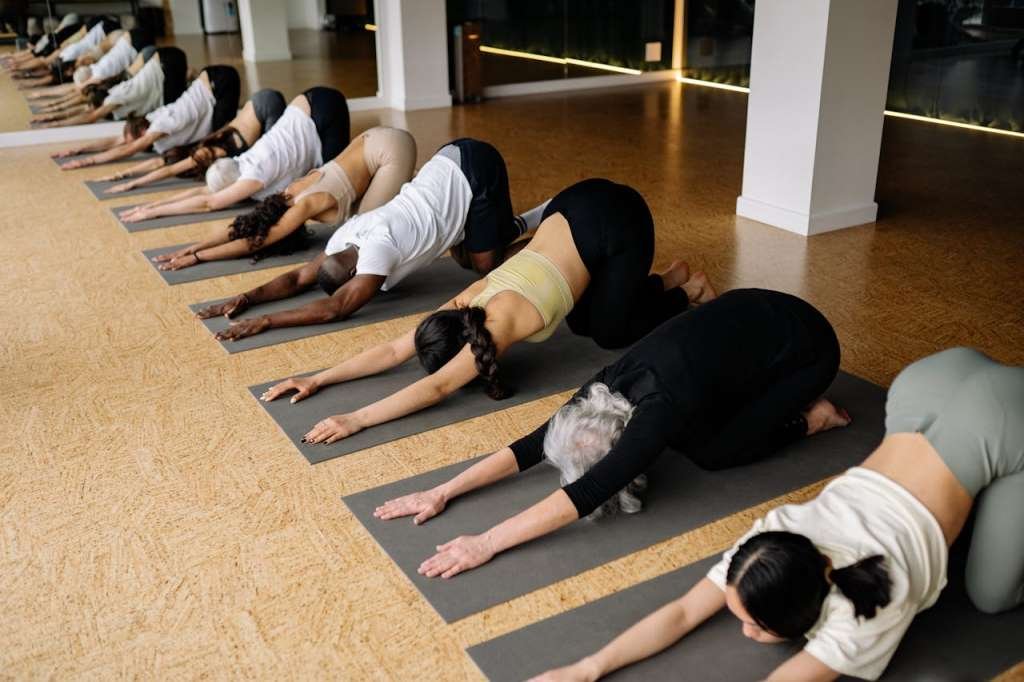The Future of Real Estate: Wellness Communities with Built-in Fitness Lifestyles
The Future of Real Estate: Wellness Communities with Built-in Fitness Lifestyles
Wellness Communities with Built-in Fitness Lifestyles
In recent years, the real estate industry has witnessed a transformative shift towards wellness communities, where the focus is on enhancing the well-being of residents through thoughtfully designed environments. These communities are not just about providing a place to live; they aim to create a holistic lifestyle that promotes health, happiness, and a sense of community. With increasing awareness of the importance of mental and physical health, wellness communities address the growing demand for living spaces that support a balanced lifestyle.
Wellness communities incorporate elements that encourage active living, social interaction, and environmental sustainability. Developers and architects are now prioritizing features that go beyond traditional amenities, integrating nature, fitness, and community spaces to create a comprehensive living experience. This approach aligns with the growing global emphasis on wellness, where people are increasingly looking for environments that support their health journeys, much like individuals incorporating protein powder into their daily routines to complement an active and balanced lifestyle.
As you explore the concept of wellness communities, it’s essential to understand how these developments cater to the evolving needs of modern residents. By focusing on the holistic development of individuals and communities, these spaces are setting a new standard in residential living, making them an attractive option for those seeking a healthier lifestyle.
The Rise of Integrated Fitness Lifestyles
The integration of fitness into daily life is a trend that is reshaping how residential homes are designed and marketed. This shift is driven by the recognition that an active lifestyle is crucial for maintaining physical and mental health. Wellness communities are leading the way in this movement by providing residents with convenient access to fitness facilities and programs that are seamlessly integrated into their daily routines, an approach that supports overall well-being and can complement health journeys such as IVF treatment, where physical wellness plays a vital role in improving outcomes.
In these communities, you can expect to find state-of-the-art gyms, yoga studios, swimming pools, and walking trails, all designed to encourage regular physical activity. Moreover, many developments offer group fitness classes and personalized wellness programs that cater to various fitness levels and preferences. This approach not only promotes health but also fosters a sense of belonging and community among residents.
By embracing integrated fitness lifestyles, wellness communities are redefining what it means to live a balanced life. They provide home buyers with the opportunities needed to prioritize their health without the need to travel far from home, making it easier for people to adopt and maintain healthy habits, while also addressing common wellness concerns such as hair loss, stress, and fatigue through holistic living environments.
Benefits of Wellness Communities for Residents
Living in a wellness community offers numerous benefits that extend beyond physical health. These communities are designed to enhance the overall quality of life by addressing various aspects of well-being, including mental, emotional, and social factors. One of the primary advantages is the opportunity for residents to live in an environment that supports their health goals and encourages personal growth.
Wellness communities often provide access to resources that promote mental health, such as meditation gardens, quiet zones, and workshops on stress management. Additionally, the emphasis on social interaction through community events and shared spaces helps residents build meaningful connections, reducing feelings of isolation and loneliness. This sense of community is crucial in fostering a supportive environment where individuals can thrive.
Furthermore, living in a wellness community can lead to improved life satisfaction and happiness. By offering a living space that prioritizes well-being, home buyers are better equipped to handle the stresses of daily life, ultimately leading to a more fulfilling and balanced lifestyle. This holistic approach to living not only benefits individuals but also contributes to the overall harmony and vitality of the community.

Key Features of Wellness-Oriented Developments
Wellness-oriented developments are characterized by a range of features that promote a healthy and balanced lifestyle. These features are carefully designed to cater to the diverse needs of residents, ensuring that everyone can benefit from the community’s offerings. Below are some key elements commonly found in wellness communities:
1. Nature Integration: Green spaces, gardens, and nature trails are integral to wellness communities, providing residents with access to the outdoors and enhancing their connection with nature.
2. Active Lifestyle Amenities: Facilities such as gyms, sports courts, and swimming pools encourage physical activity and help residents maintain an active lifestyle.
3. Community Spaces: Shared areas like community centers, lounges, and coworking spaces foster social interaction and collaboration among residents.
4. Holistic Health Services: Wellness communities often offer on-site health services, such as fitness classes, nutrition counseling, and wellness workshops, to support residents’ health journeys.
5. Sustainability Features: Eco-friendly designs, energy-efficient systems, and sustainable practices are common in these developments, aligning with the growing demand for environmentally conscious living.
By incorporating these features, wellness communities create a living environment that supports residents’ physical, mental, and emotional well-being. This comprehensive approach ensures that all aspects of health are addressed, making these communities an ideal choice for those seeking to buy or sell a home that provides a healthy lifestyle.
The Role of Design in Promoting Health and Wellness
Design plays a pivotal role in promoting health and wellness within residential communities. Thoughtful design can significantly impact how residents interact with their environment and each other, ultimately influencing their overall well-being. In wellness communities, design elements are strategically implemented to create spaces that encourage healthy behaviors and foster a sense of community.
One of the essential aspects of design in wellness communities is the use of natural light and ventilation. By maximizing natural light and incorporating proper air circulation, these developments create healthier living spaces that enhance mood and reduce stress. Additionally, the layout of these communities often prioritizes pedestrian pathways and bike lanes, encouraging residents to engage in physical activity as part of their daily routine.
Moreover, the design of wellness communities often includes elements that promote mindfulness and relaxation. Quiet zones, meditation gardens, and water features are common, providing residents with spaces to unwind and recharge. By integrating these design principles, wellness communities offer an environment that supports residents’ well-being on multiple levels, making them a popular choice for those seeking a healthier lifestyle. Communities that promote a healthy lifestyle are preferred by buyers, residential investors, and landlords.
Case Studies of Successful Wellness Communities
Examining successful wellness communities provides valuable insights into how these developments can effectively promote health and well-being. These case studies highlight the innovative approaches and unique features that make wellness communities desirable residential options.
• Serenbe, Georgia: Serenbe is a prime example of a wellness community that seamlessly integrates nature and sustainable living. Located in Georgia, this community is designed to promote a connection with nature, offering residents access to organic farms, walking trails, and green spaces. Serenbe’s commitment to sustainability is evident in its eco-friendly building designs and focus on local, organic food production.
• Rancho Mission Viejo, California: Rancho Mission Viejo is another successful wellness community known for its emphasis on active living and community engagement. This development features a wide range of amenities, including fitness centers, parks, and community events, encouraging residents to lead healthy and socially connected lives. The community’s design encourages outdoor activities, with extensive walking and biking trails that connect various neighborhoods.
• Mueller, Austin, Texas: Mueller is a wellness community that prioritizes health, sustainability, and inclusivity. The development features a variety of parks, trails, and recreational facilities, promoting an active lifestyle among residents. Additionally, Mueller’s commitment to sustainability is reflected in its use of green building practices and renewable energy sources, making it a model for eco-conscious living.
These case studies demonstrate how wellness communities can successfully create environments that support residents’ physical, mental, and social well-being. By learning from these examples, developers can implement effective strategies that meet the growing demand for wellness-oriented living spaces.
How Developers Can Embrace Wellness Trends
As the demand for wellness communities continues to rise, developers have a unique opportunity to embrace these trends and create living spaces that prioritize health and well-being. To successfully integrate wellness into their projects, developers must consider several key factors that contribute to a holistic living experience.
First, understanding the needs and preferences of potential home buyers is crucial. Developers should conduct market research to identify the wellness features that are most appealing to their target audience. By tailoring their developments to meet these needs, they can create communities that resonate with residents and foster a sense of belonging.
Second, collaboration with experts in health, wellness, and sustainability is essential. By partnering with architects, designers, and wellness professionals, developers can ensure that their projects incorporate the latest innovations in wellness-oriented design and amenities. This collaborative approach allows residential property investors to create communities that offer comprehensive wellness solutions.
Finally, developers should prioritize sustainability and eco-friendly practices in their projects. By incorporating green building techniques and renewable energy sources, they can create developments that align with the growing demand for environmentally conscious living. This commitment to sustainability not only benefits residents but also enhances the community’s overall appeal and marketability.

The Impact of Wellness Communities on Property Values
The rise of wellness communities has significant implications for property values, as these developments offer features that are highly sought after by modern homebuyers. As the demand for health-oriented living spaces increases, wellness communities are becoming more attractive investments for both residents and real estate investors.
One of the primary factors contributing to the increased property values in wellness communities is their unique selling proposition. These developments offer a lifestyle that goes beyond traditional residential amenities, focusing on health, sustainability, and community engagement. This comprehensive approach enhances the desirability of these properties, leading to higher demand and, consequently, increased property values.
Additionally, wellness communities often have a positive impact on the surrounding areas, contributing to the overall growth and development of the region. As these communities attract more residents, they stimulate local economies, leading to improved infrastructure, increased job opportunities, and a more vibrant community. This positive ripple effect further boosts property values in and around wellness communities.
Marketing Wellness Communities to Potential Buyers
Effectively marketing wellness communities requires a strategic approach that highlights the unique benefits and features these developments offer. To attract potential buyers, developers and real estate agents should focus on showcasing the lifestyle and well-being advantages that set wellness communities apart from traditional residential options.
Key Marketing Strategies:
1. Highlight Unique Features: Emphasize the wellness-oriented amenities and design elements that cater to health and well-being, such as gyms, nature trails, and meditation spaces.
2. Promote Community Engagement: Showcase the community events and social opportunities available to residents, highlighting the sense of belonging and connection that wellness communities foster.
3. Leverage Digital Marketing: Utilize social media, virtual tours, and interactive content to reach a broader audience and engage potential buyers with immersive experiences.
4. Share Success Stories: Provide testimonials and case studies from current residents who have benefited from the wellness-oriented lifestyle, offering prospective buyers real-life examples of the community’s impact.
By implementing these strategies, developers and real estate professionals can effectively communicate the value of wellness communities to potential buyers, ultimately driving interest and demand for these innovative living spaces.
Conclusion: The Future of Real Estate and Wellness Integration
As we look towards the future of real estate, the integration of wellness into residential developments is poised to become a defining trend. Wellness communities represent a shift towards a more holistic approach to living, where health, sustainability, and community engagement are at the forefront. By embracing these principles, developers can create living spaces that meet the evolving needs of modern residents and contribute to a healthier, more connected society.
For those considering a move to a wellness community, the benefits are clear: a supportive environment that prioritizes health and well-being, a vibrant community that fosters social connections, and a lifestyle that aligns with personal values. As the demand for these developments continues to grow, wellness communities are set to play a significant role in shaping the future of residential living.
The Future of Real Estate: Wellness Communities with Built-in Fitness Lifestyles | OutFactors – Dallas Fort Worth, TX




